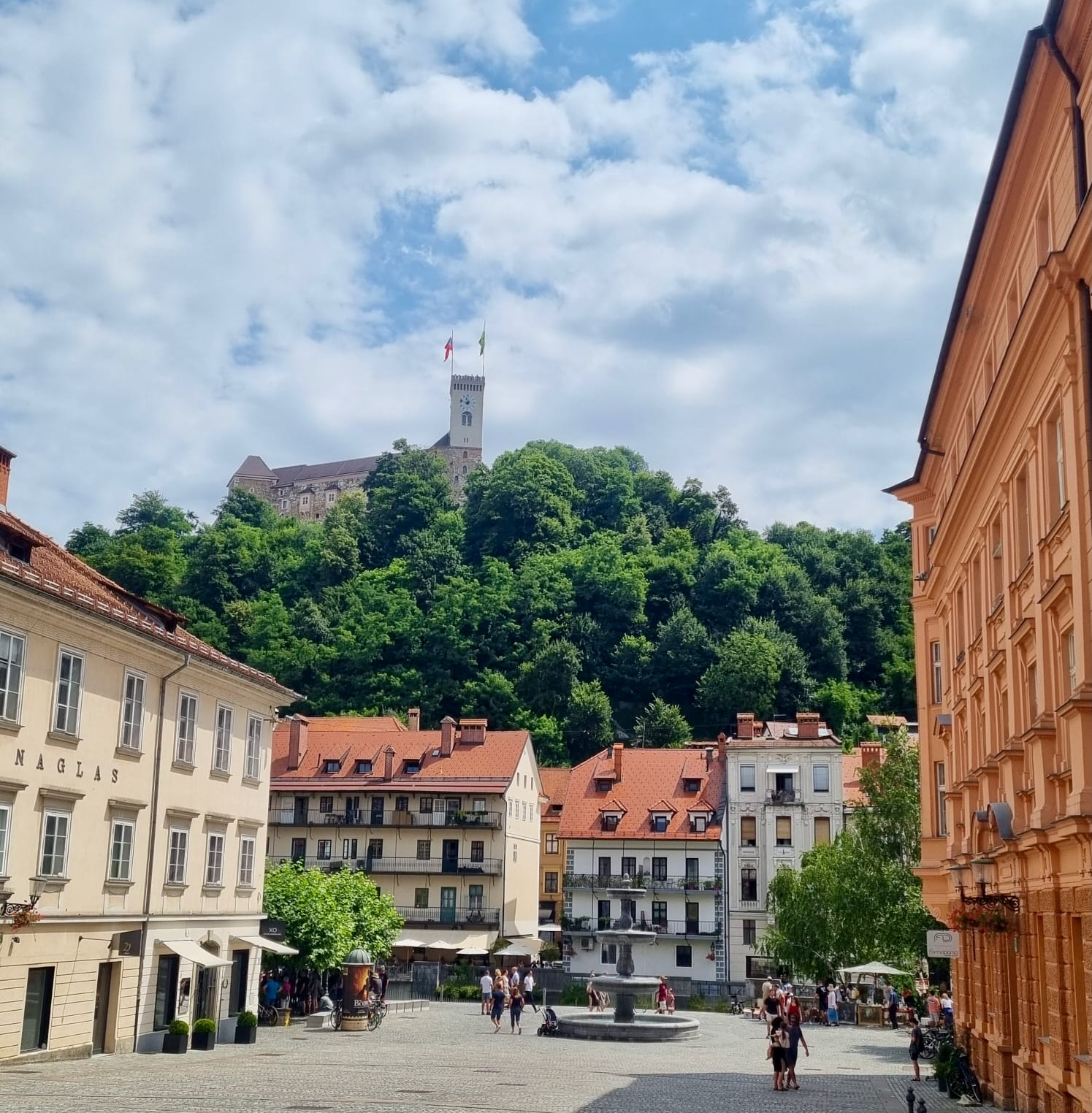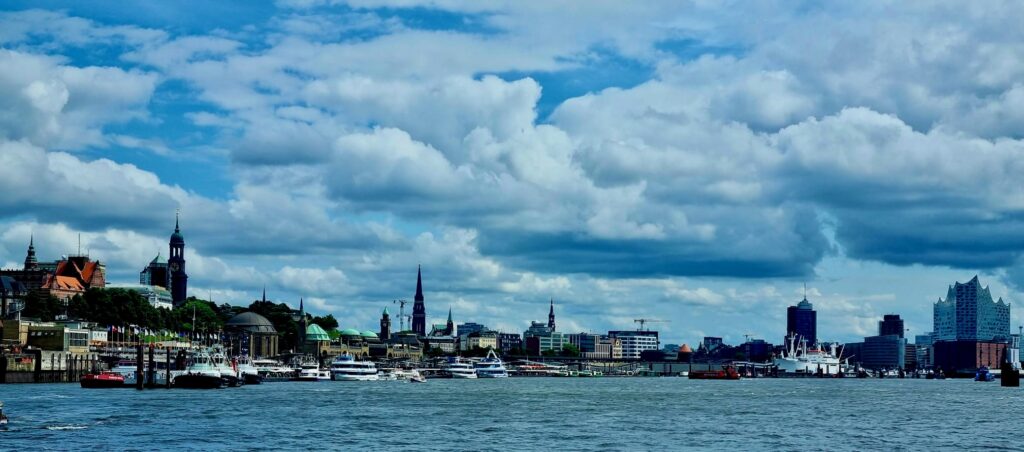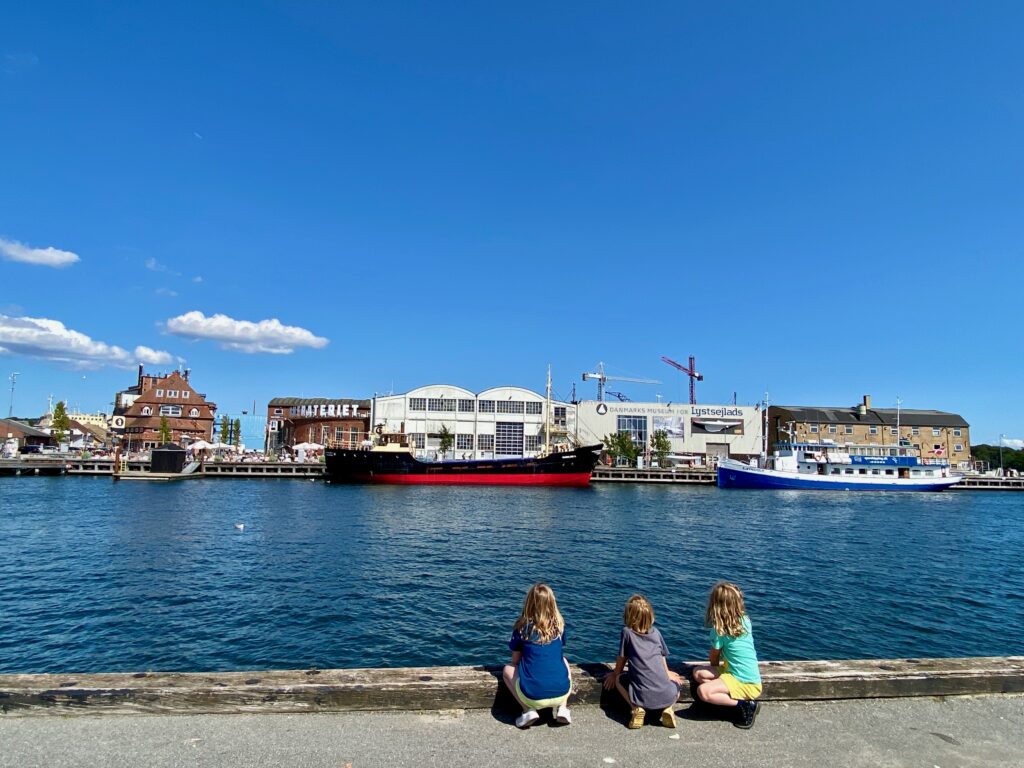Slovenia has been a top destination on my European travel wish list for awhile now, so I was excited to incorporate it into this summer’s extended travel itinerary. After a lot of research, we decided to stay for longer stretches in two cities (4 nights in Ljubljana, 5 nights in Lake Bled) and factor in daytrips from there. We thought 10 days in Slovenia would be sufficient but in hindsight we could have stayed longer, particularly in the Julian Alps where there is an endless supply of outdoor and nature-oriented activities for families. Lake Bled/Lake Bovinj are also the kinds of places where you could spend several weeks, a month, or longer in a summer rental or RV/car camping (many Europeans do just that); in that sense it reminded us of Big Bear, Lake Arrowhead, Lake George, and similar destinations in the U.S. (more on the Lakes region in a separate post).
Ljubljana
Ljubljana (pronounced “Lubliana” – keep telling yourself those “j’s” are silent!) is one of the prettiest and most enjoyable European capital cities we’ve visited. The pictures tell a better story than I could; we never got sick of strolling alongside the Ljubljanica River, with car-free, cafe-lined streets framing both sides of the river and a romantic, dramatic ambience from multiple viewpoints as you gaze up the hill to the castle. Even with steamier temperatures in summer, the weather couldn’t damper our fondness for this city. There are plenty of food options; with the heat we didn’t want heavy traditional food, so gravitated more to fresher, lighter fare. In particular we loved the sandwiches with fresh stracciatela cheese at Dobra Vila Sendvičerija and had a delicious, casual Middle Eastern meal at Abi Falafel.
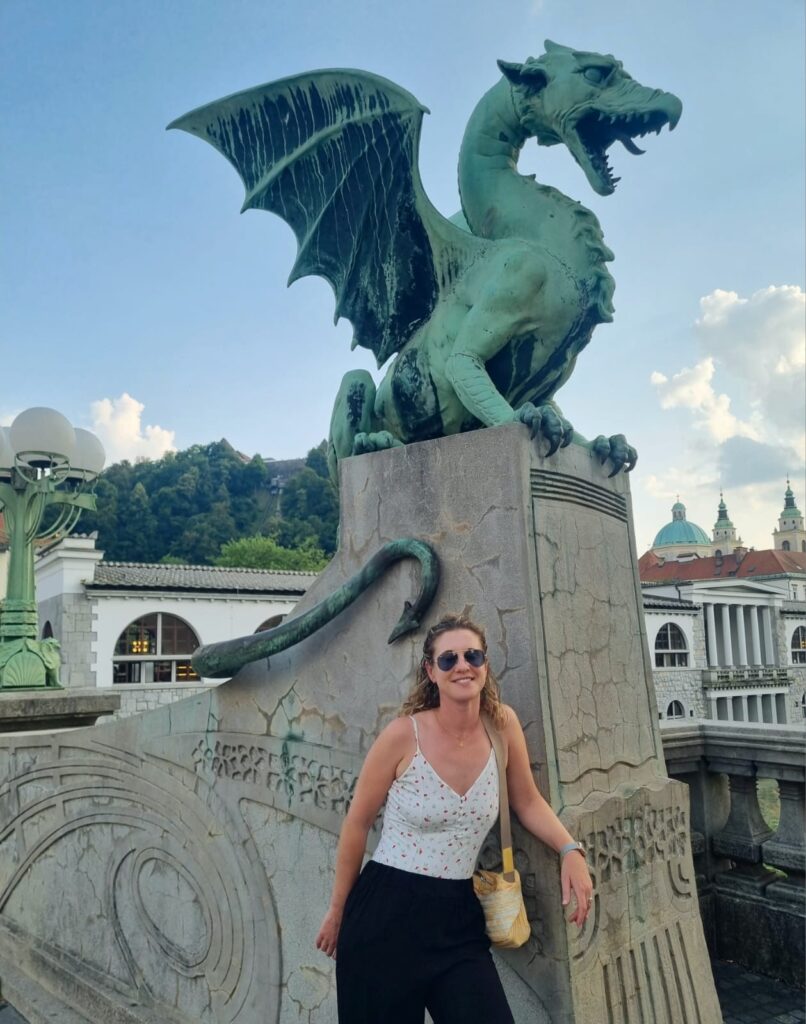
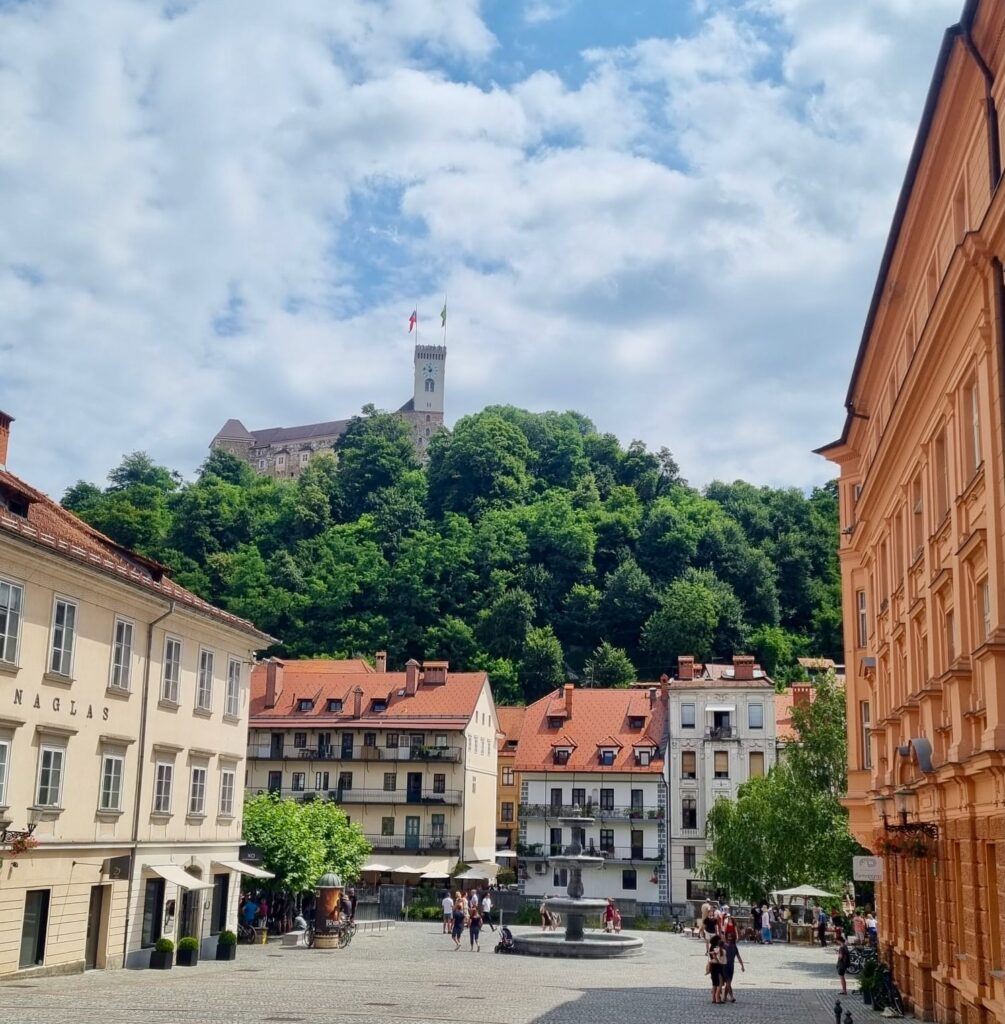
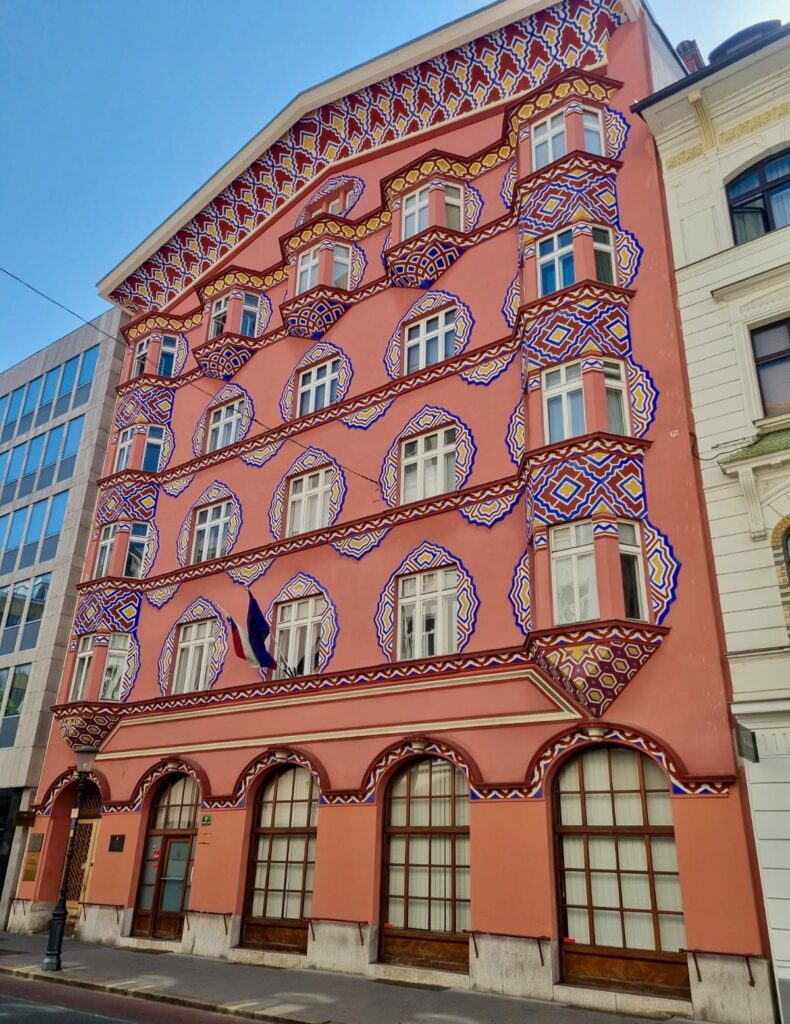

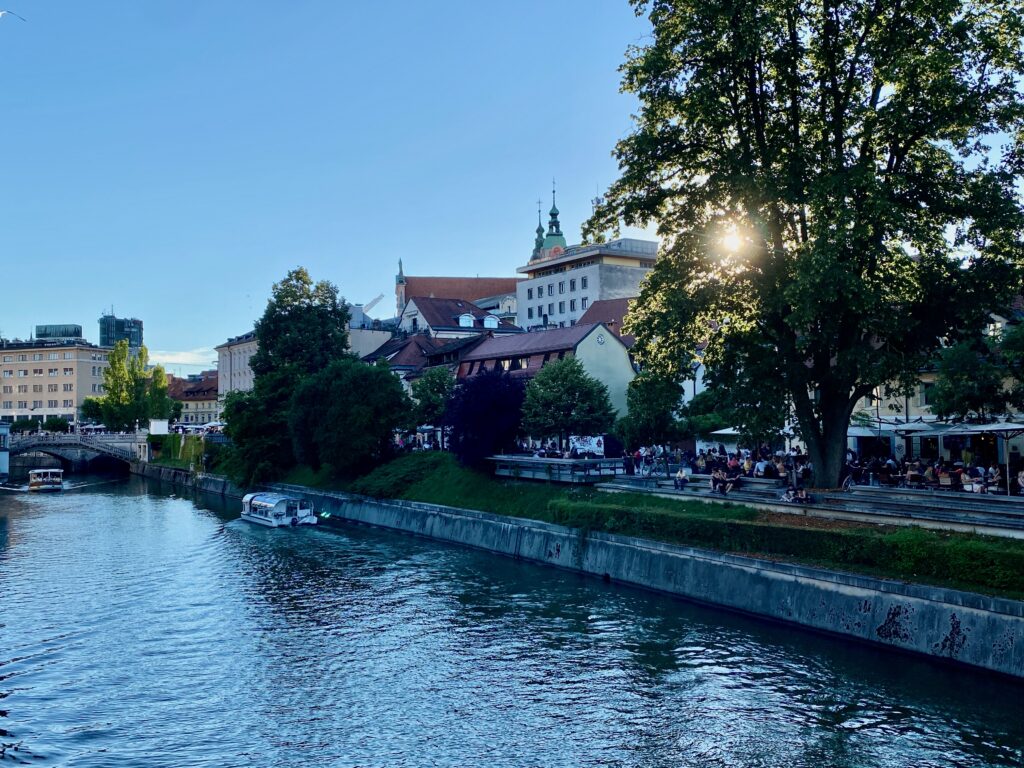
We enjoyed exploring Ljubljana in a variety of ways:
- City Walking Tour with a Local: we took an excellent Airbnb Experiences walking tour of Ljubljana with Ana, with a perfect mix of history, culture, food, and visiting areas of the city beyond the main tourist sites. Although it’s a country of only about 2 million inhabitants, Slovenia has a fascinating history incorporating the influences of four neighboring peoples/countries (Germanic, Romanic, Slavic, and Mediterranean) and Ljubljana is at the center of all of these. Slovenia was under the Hapsburg and Austro-Hungarian empire for 500 years, but allowed to keep its language and identity, and was then carved up after World War I to become part of Yugoslavia, a communist and socialist system through the 1980’s under the dictator Tito. Slovenia was more fortunate in a sense because it sought and gained its independence rather swiftly and without bloodshed in 1991, avoiding the violence, destruction, and genocide that other former Yugoslav regions experienced during the Balkan War. Slovenia has a largely homogenous ethnicity and a Roman Catholic religious majority, so it avoided much of the conflict which took place in other Balkan states with long, complicated histories between Christians, Muslims, and the repeated division of borders. As we walked through the squares, markets, and the alternative zone, Metelkova (which reminded us what Christiana in Copenhagen was like before it became a tourist haven), we appreciated Ana’s candid and balanced perspective on how Ljubljana has and continues to evolve and change as a city.
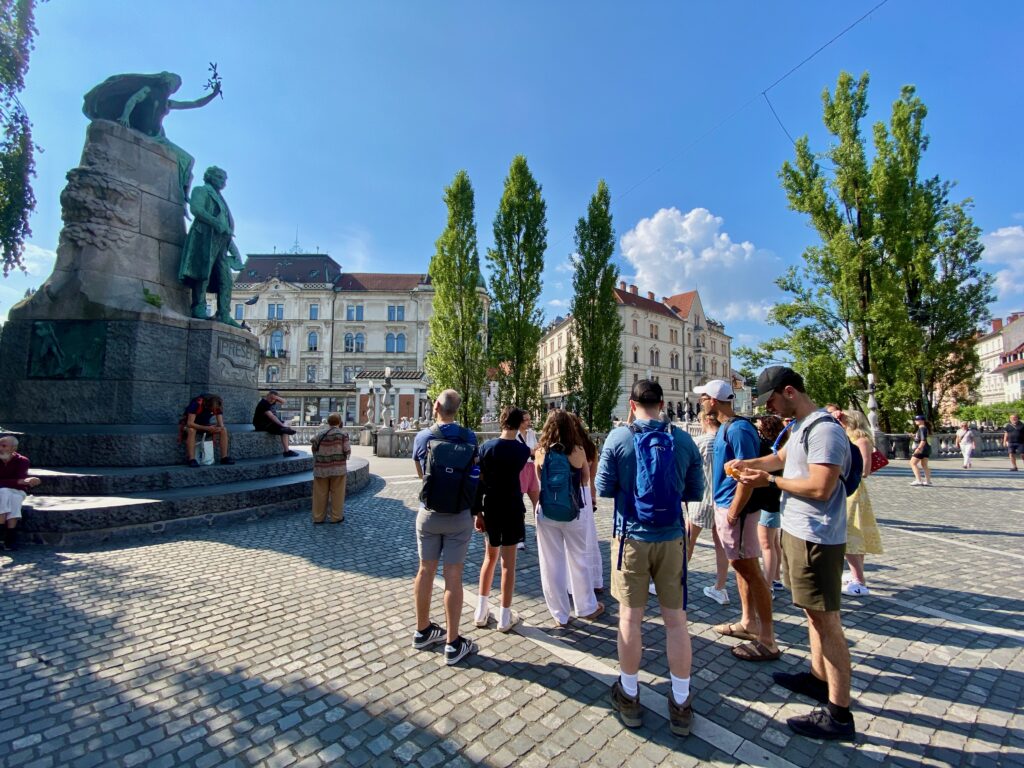
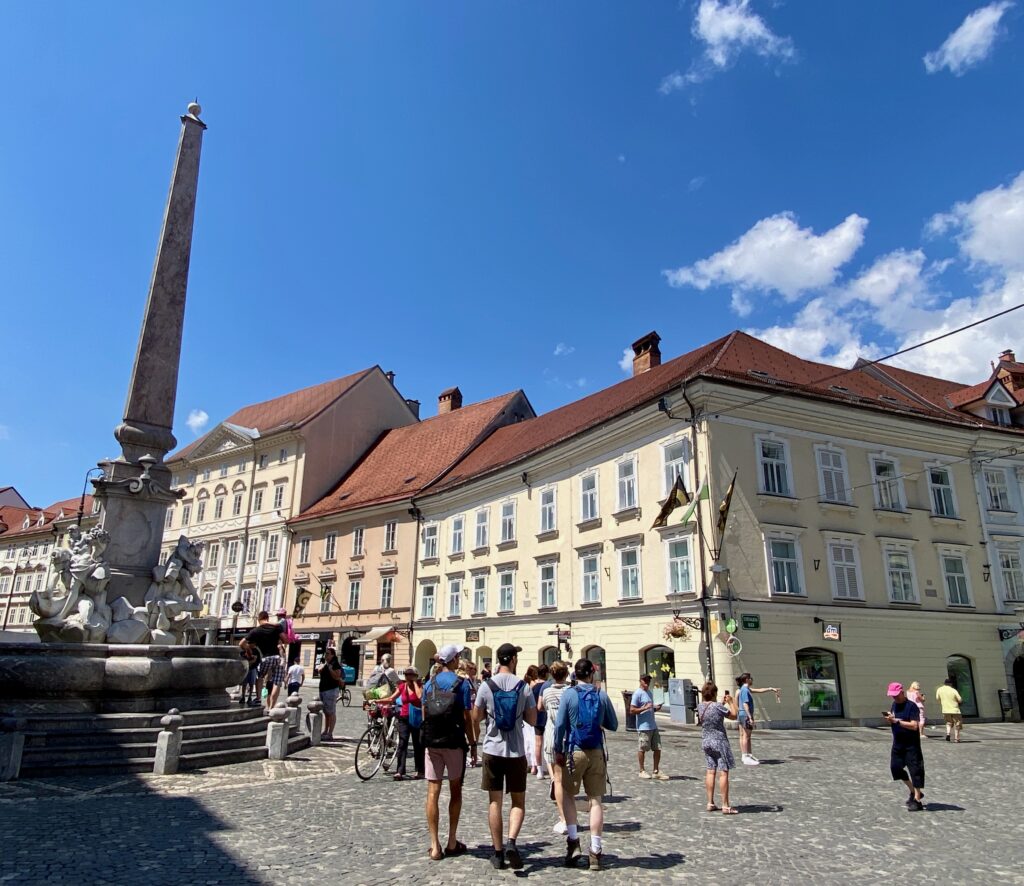
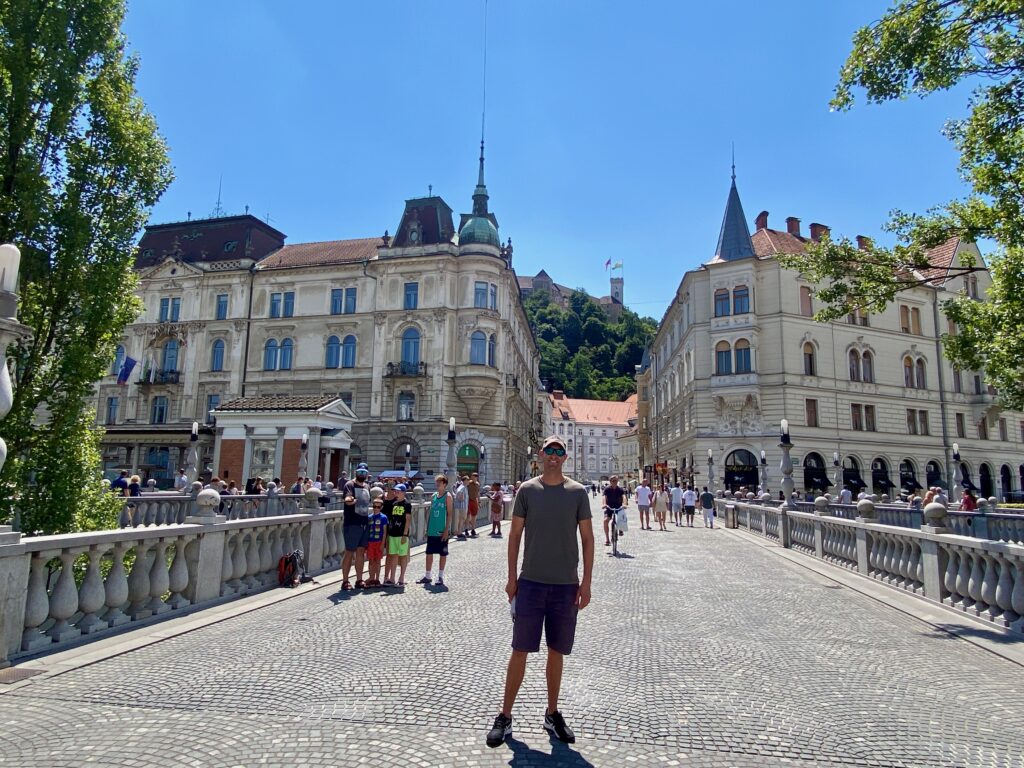
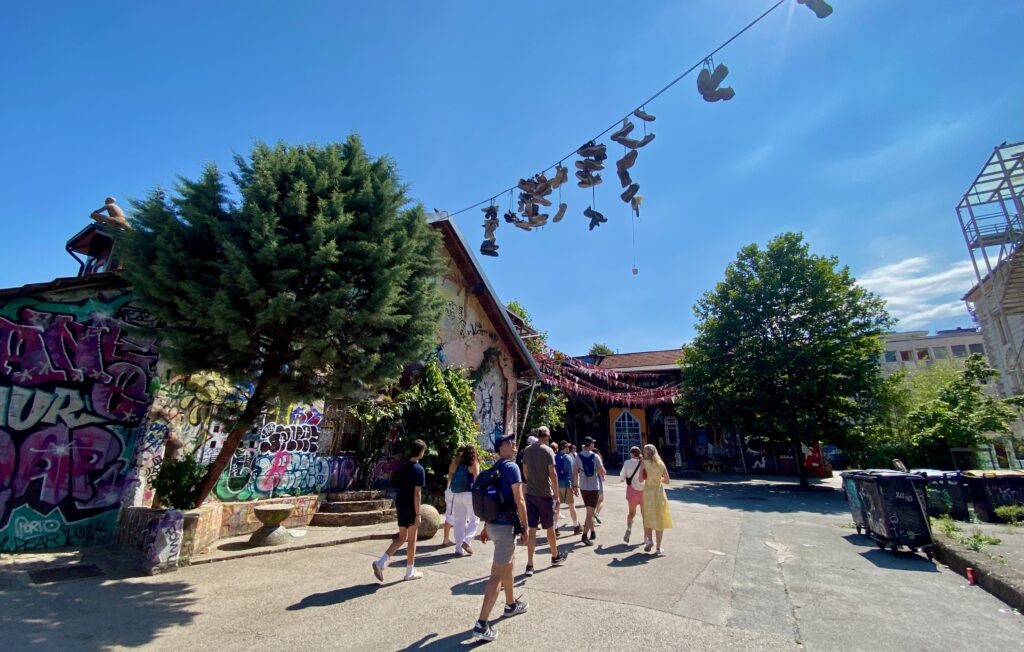
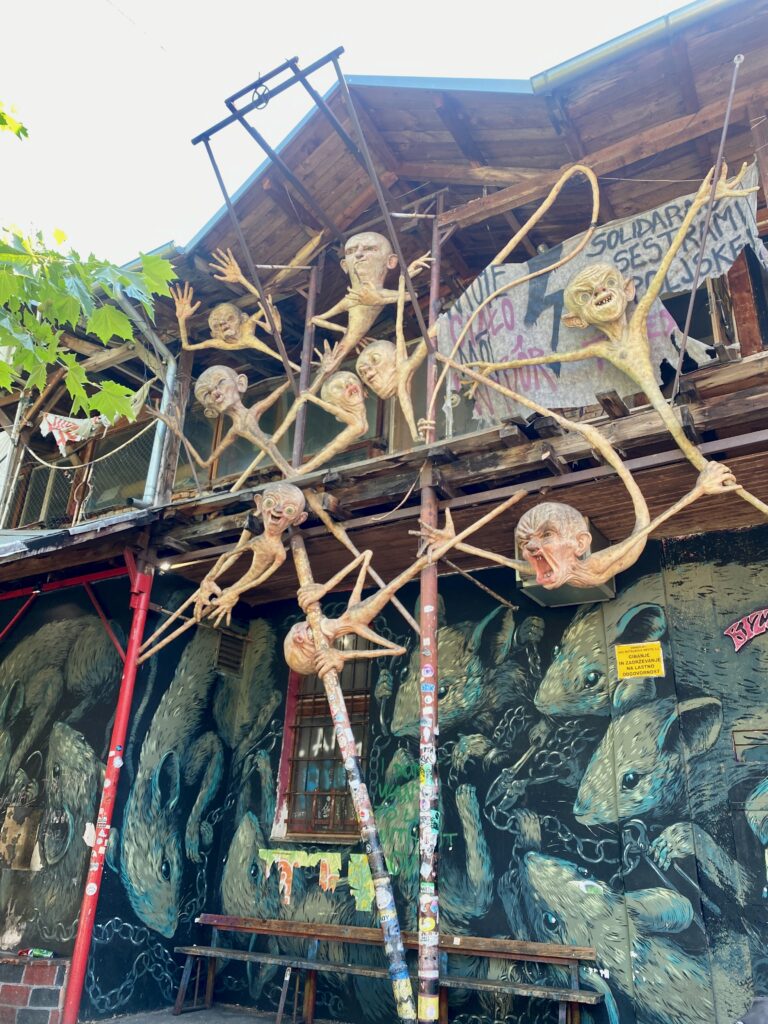
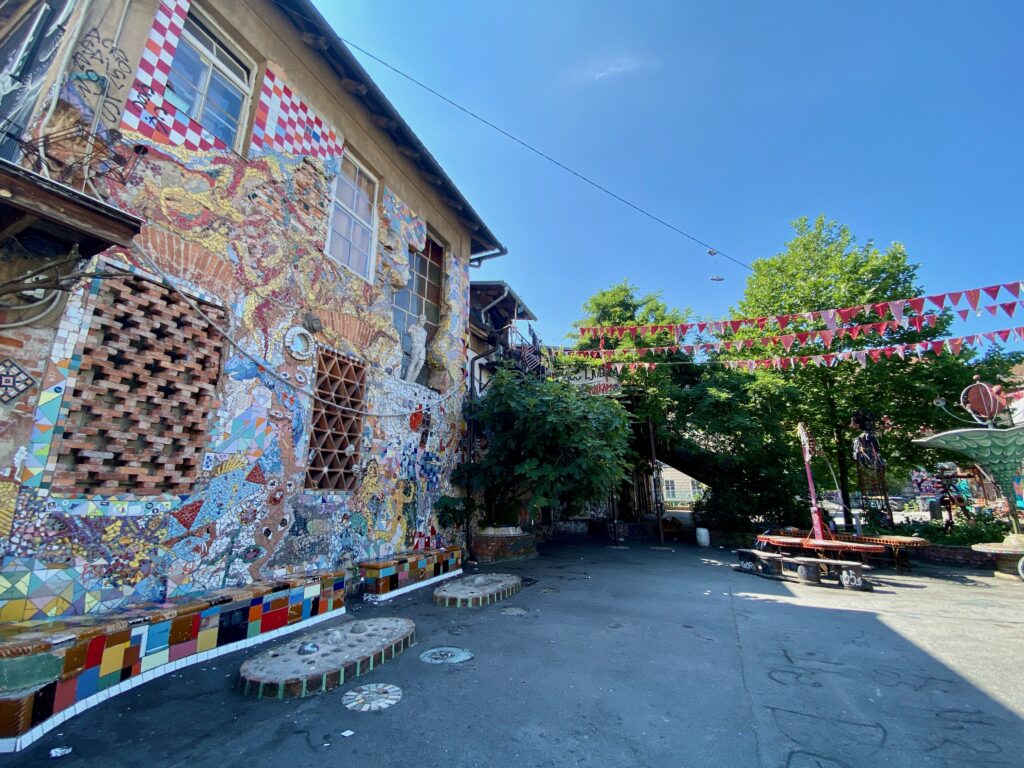

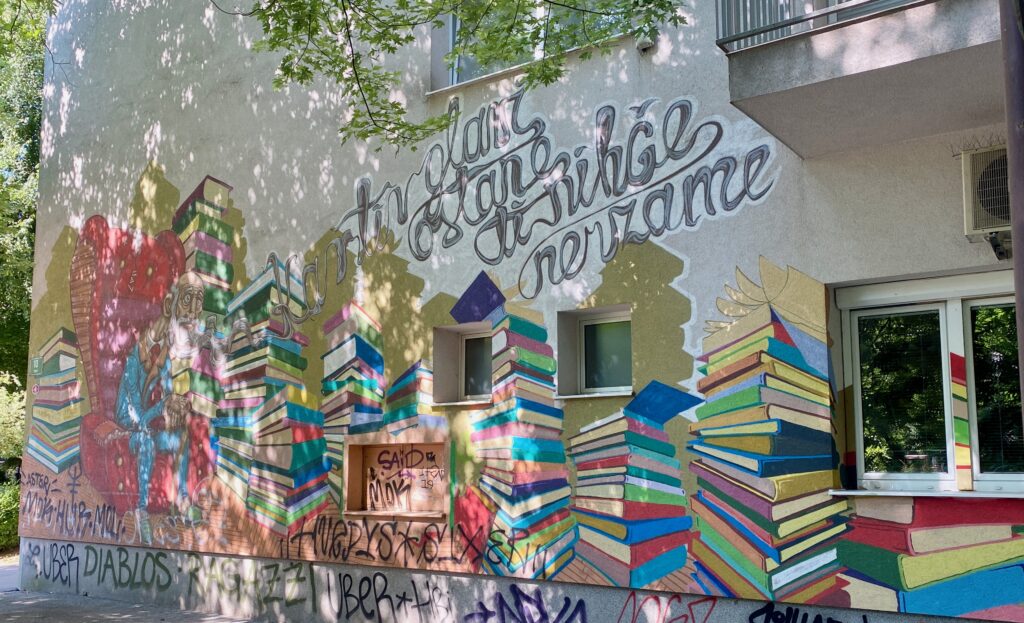
- Urban Electric Train: this is a great way to tour the city’s key sites and landmarks in a drive-by fashion and with an audioguide, and as a way to get up the hill to the castle without walking! The round-trip ride has about 10 stops (where you can get out for pictures) and lasts about an hour and 15 minutes, or you can do the ride in a hop-on, hop-off manner as the train runs continuously throughout the day and the ticket is valid all day. I appreciated being able to weave through the entire city, noting places we’d like to return to on foot, and Jacob had a blast because he was … on a train.
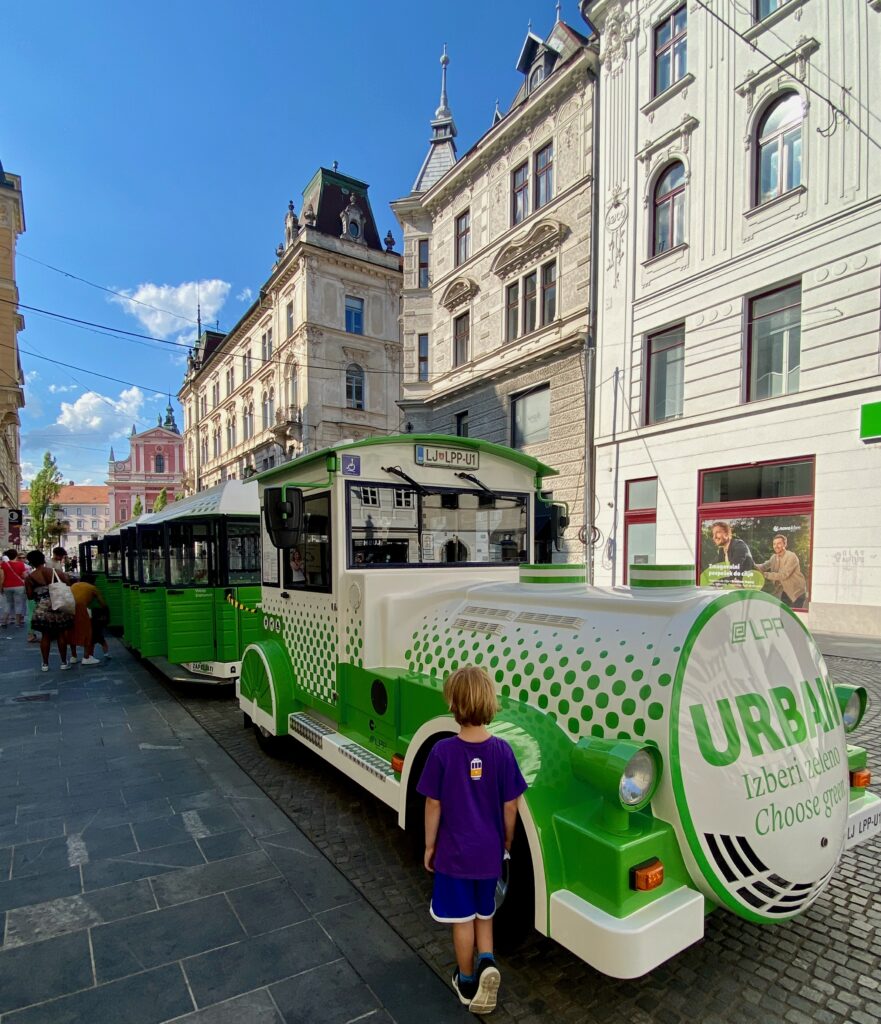
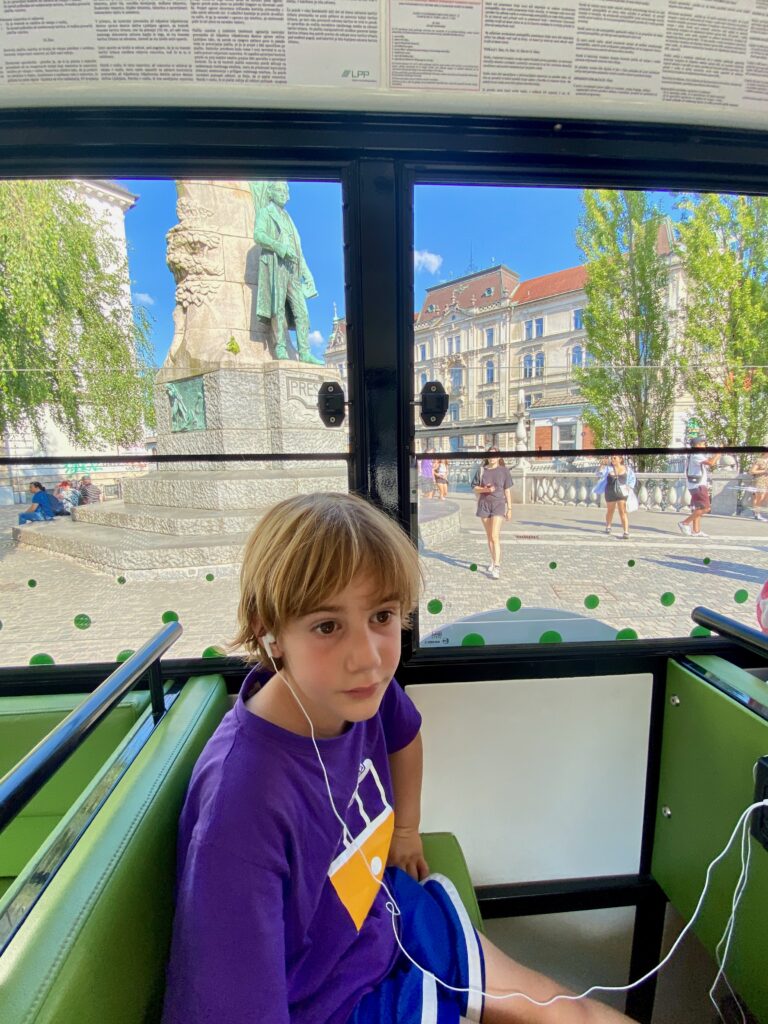
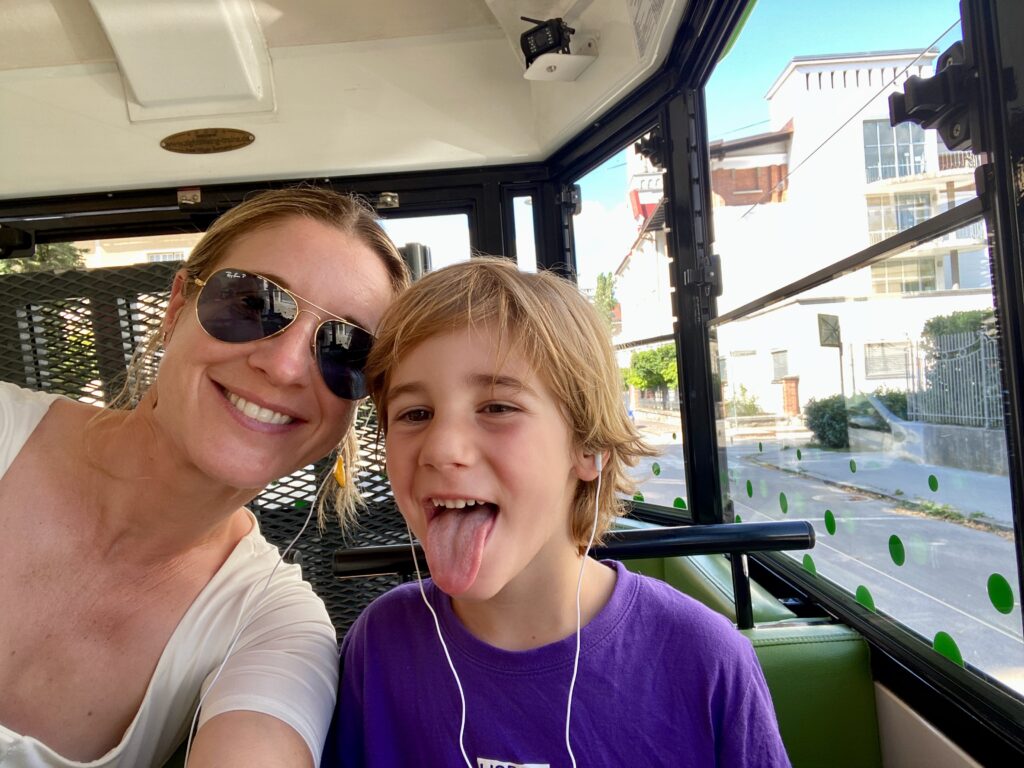
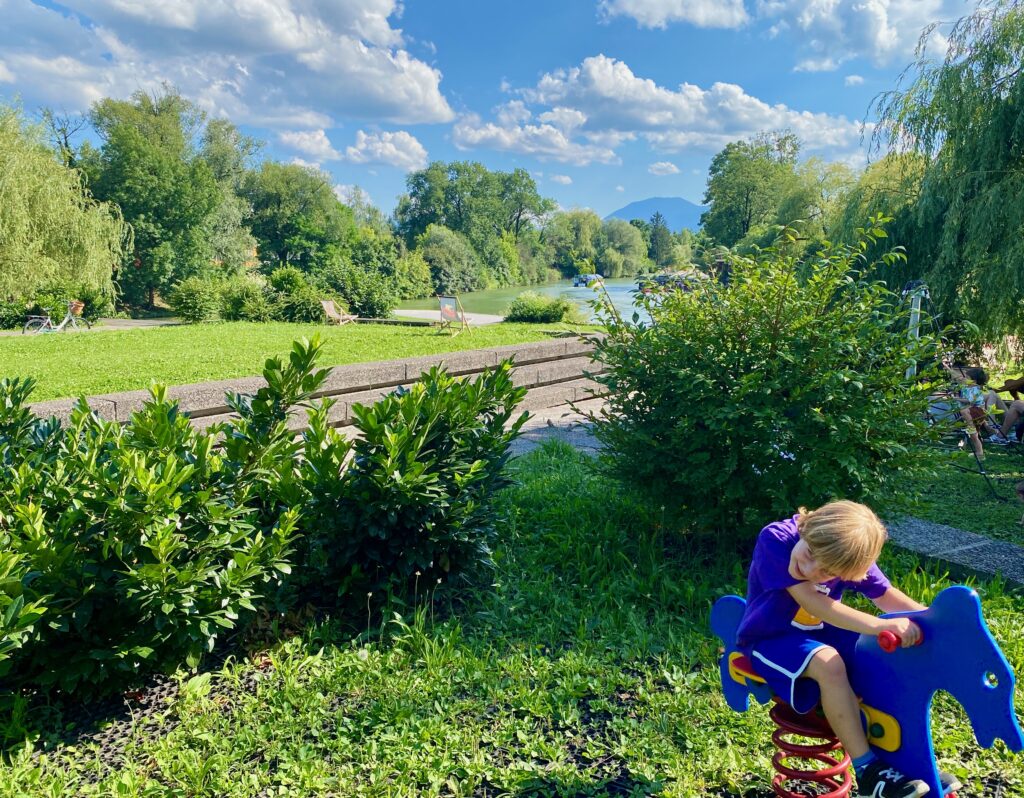
- Boat Ride: another way to tour the city is by a leisurely boat ride, similar to what we’ve done in Gdansk, Bilbao, Amsterdam, etc. This always seems to be a hit with Jacob, particularly if in the 45-minute to 1-hour range.
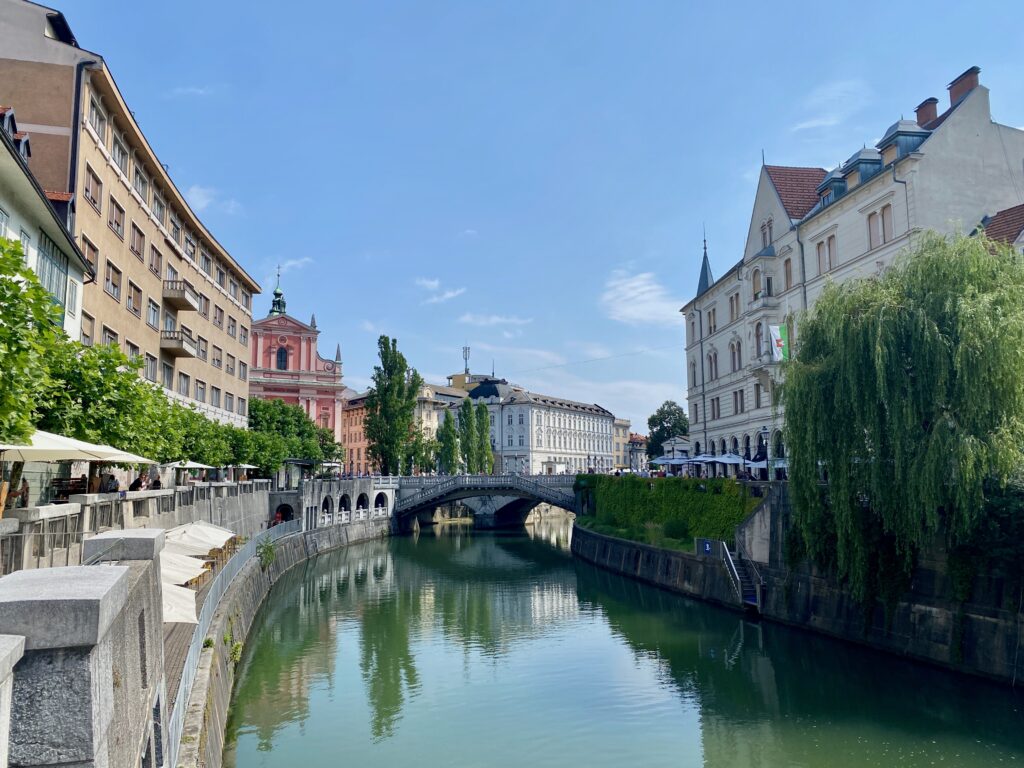
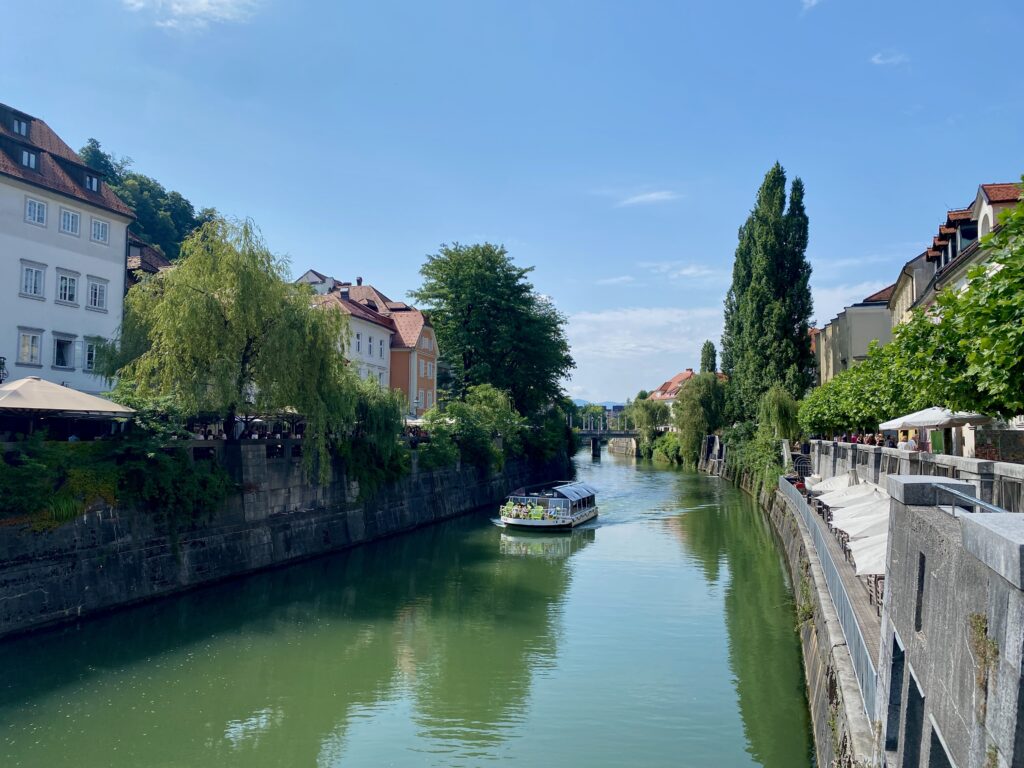
- Open Kitchen Street Food Market: on Fridays from March through October, Ljubljana’s center transforms into a vibrant, eclectic street food festival. We arrived on a Friday so it was a great introduction to the city. The EuroCup soccer matches were also going on so many bars and cafes had TVs mounted outdoors, and there was a huge TV display in a nearby beer garden, where people were just enjoying a classic summer evening with good food and beverages.
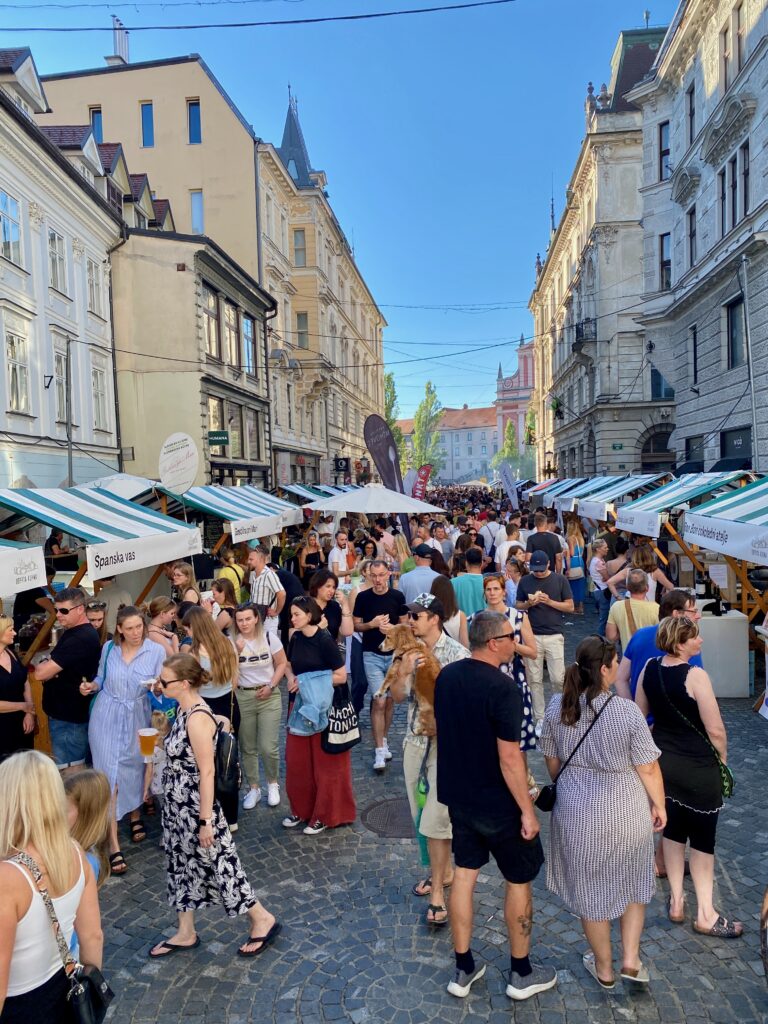
- Slovenian Wine Bars: our babysitter, Tijana, recommended a number of wine bars and wine tours to sample Slovene wine, but unfortunately we weren’t able to fit in a visit to a winery. But one evening we strolled along the river and tried a Slovene wine flight at Wine Bar Suklje: a Sparkling Brut, Vitovska Grganja (white), Cuvee Ana (orange), and Refosk (red). All were quite good and different from the whites we normally drink in Spain. We also sampled some wines at Dvorni Bar, located on a lovely plaza with a beautiful view of the waterfront and castle.
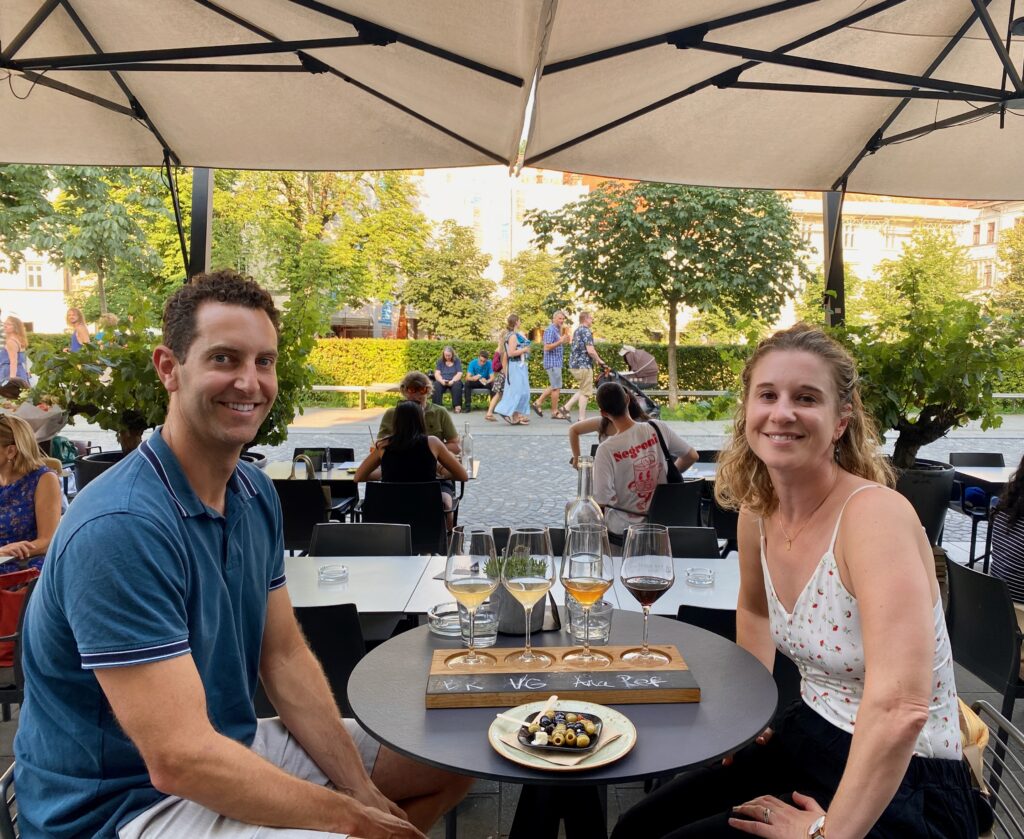
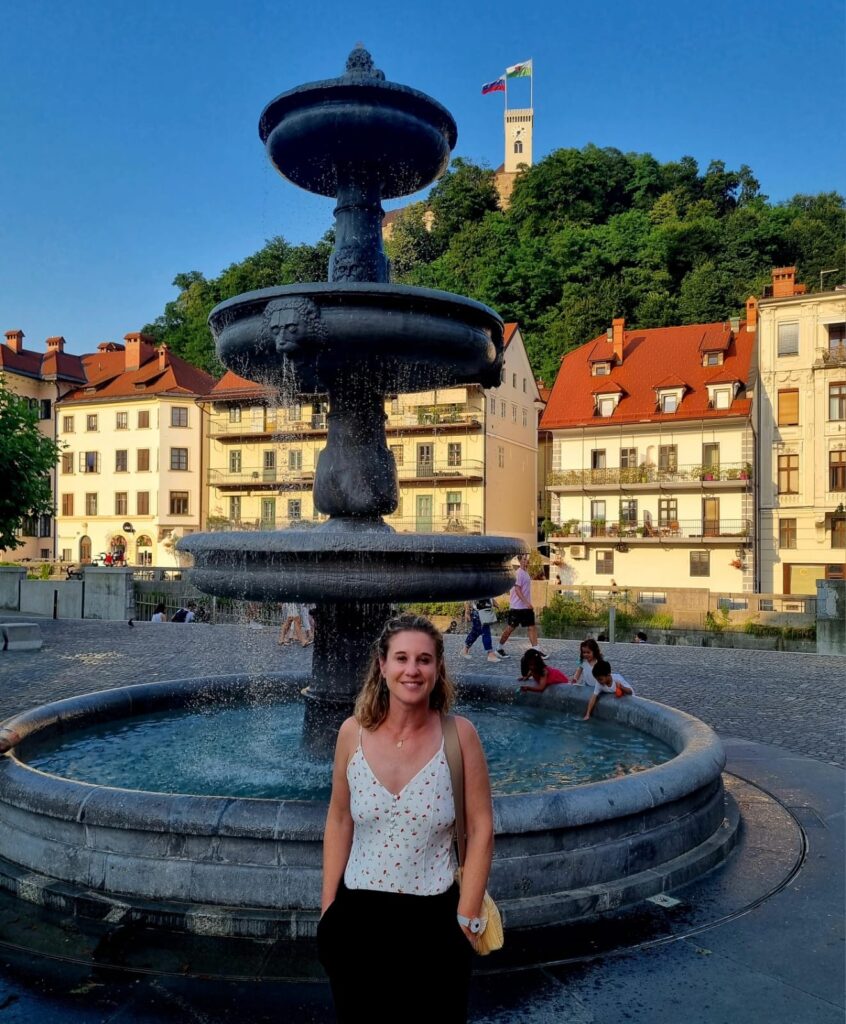
Finally, north of the river, beyond the core tourist center are many other interesting places to explore on foot, such as the huge city park, Tivoli Park, the Monument to the Revolution plaza (with art installation), and other parks.
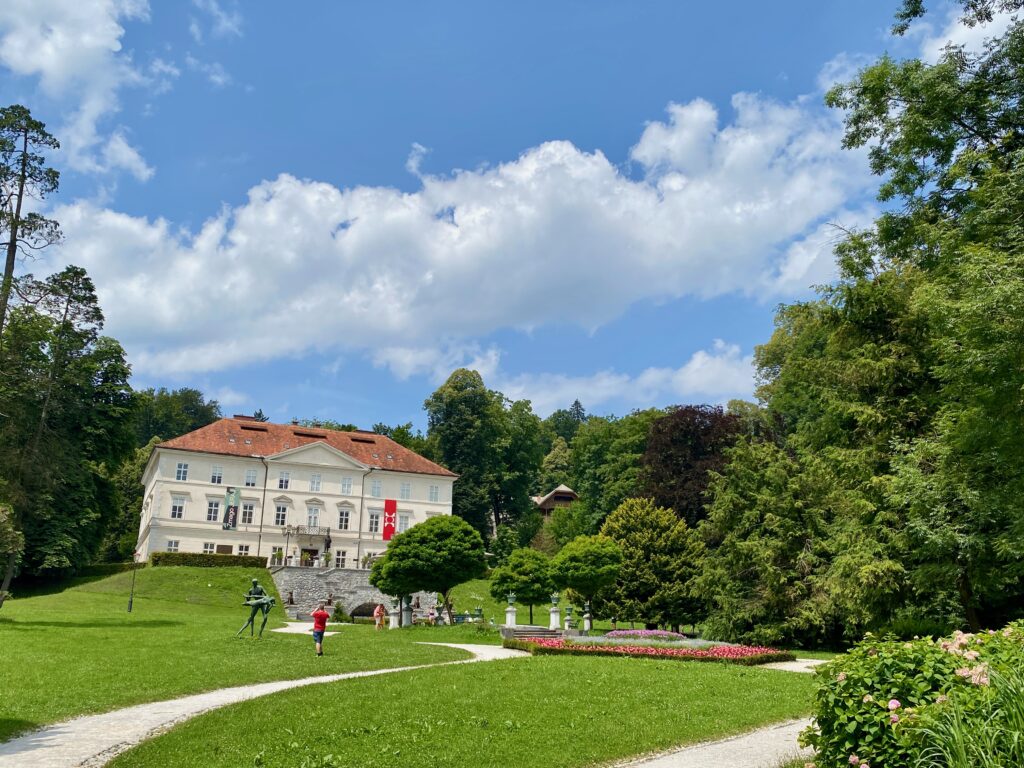
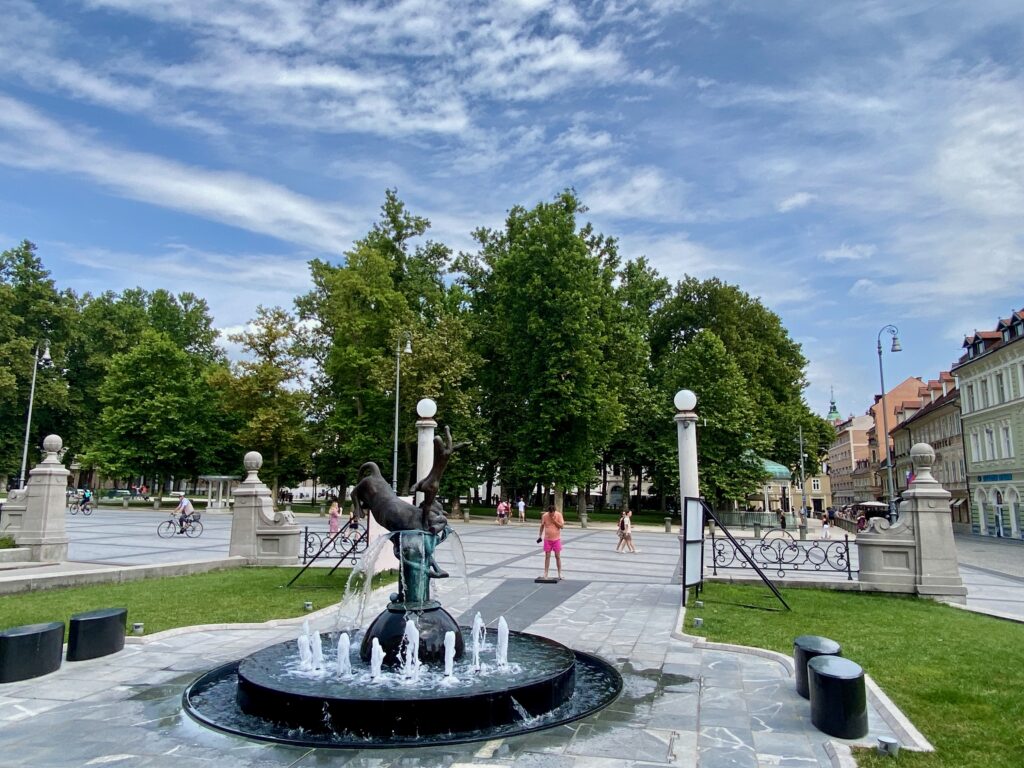

Daytrip to Postojna Caves
The Postojna caves are a must-do daytrip from Ljubljana, either by organized tour, car, or public transit. It’s about a 45-minute drive but there seems to be a lot of traffic on the ring road outside the city, so I would plan for more time; it took us almost 1 hour, 15 minutes to drive there and we almost missed the entry for our timed ticket. Speaking of, it’s best to purchase advanced tickets for the cave tour and experience, but you can skip any add-ons. The Postojna area outside of the caves includes beautiful parks and trails along a river, so I would recommend bringing a picnic, water gear, and planning to spend the day there.
You may also hear about the other impressive cave network, Škocjan Caves. How to choose which one to visit? From our research, Postojna is the better option for families with young children, as there is less walking and fewer steep inclines involved, with the tour lasting about 1.5 hours. Škocjan involves much more extensive hiking/walking and may be more appropriate and enjoyable for older kids.
The tour begins with a thrilling, fast-moving train ride into the depths of just one portion of the 24 kilometers of the largest cave network in Slovenia, over two million years old and which grow at a rate of 1 centimeter per 100 years. Jacob loved riding the train and the balance of train time versus walking was just right. The cave structures are just incredible and it was fun to look at the various formations and compare them to teeth, towers, tree roots, jellyfish, and many more shapes and structures. You also get a glimpse at olms, the largest cave-dwelling amphibious predators.

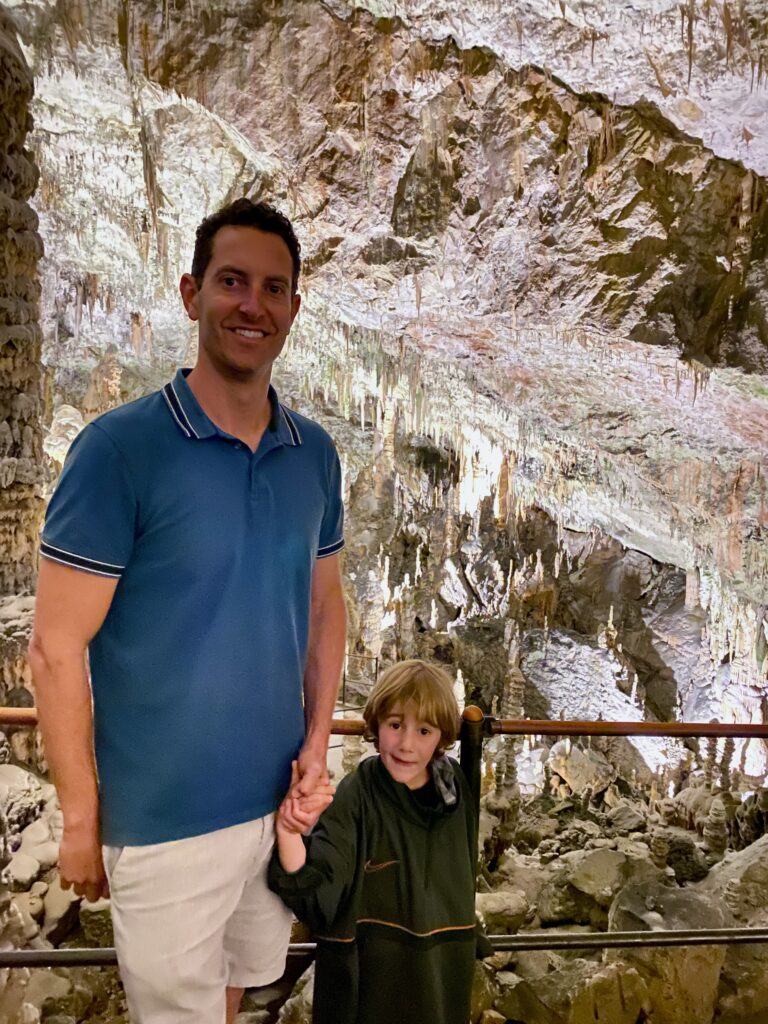
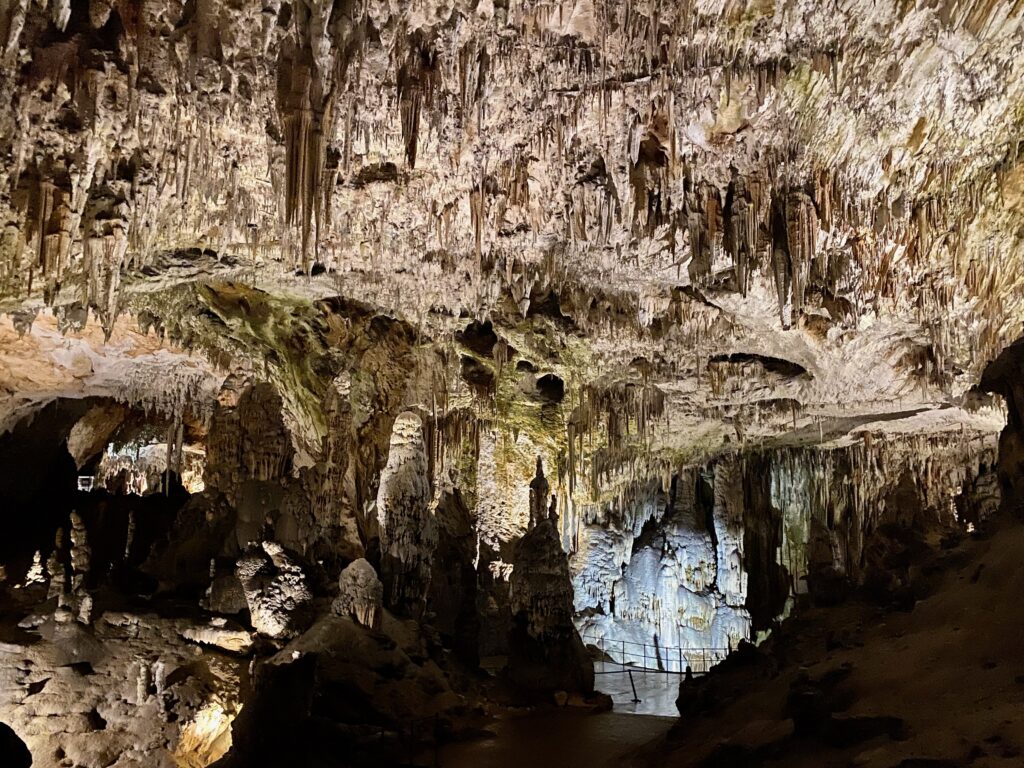
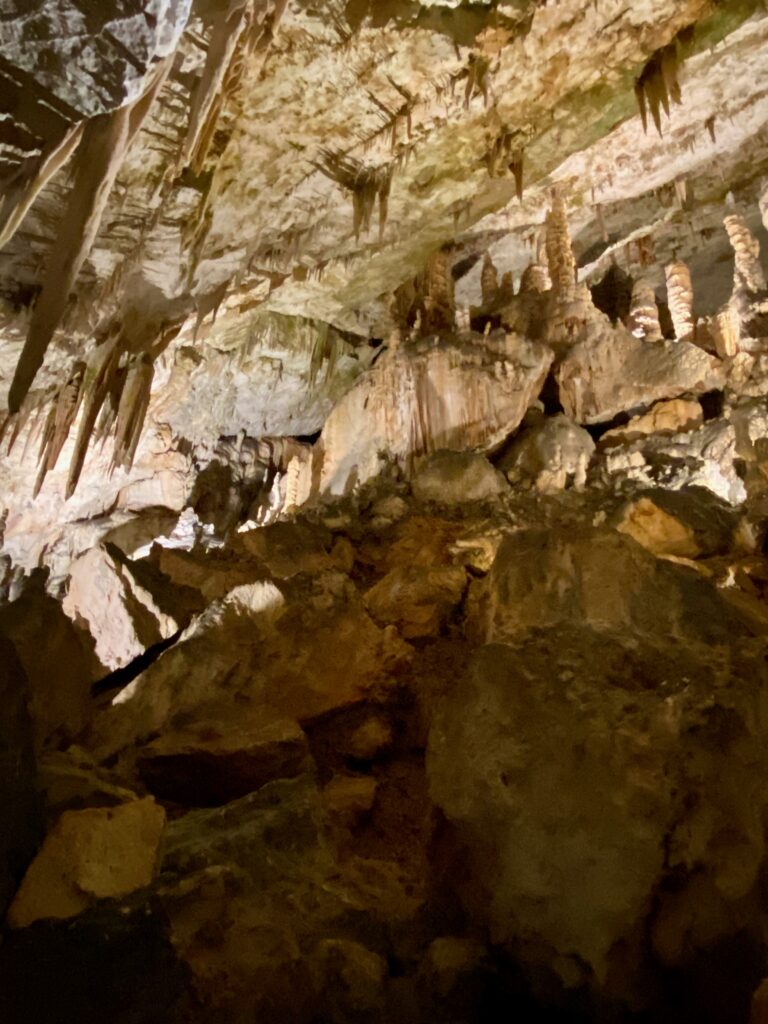

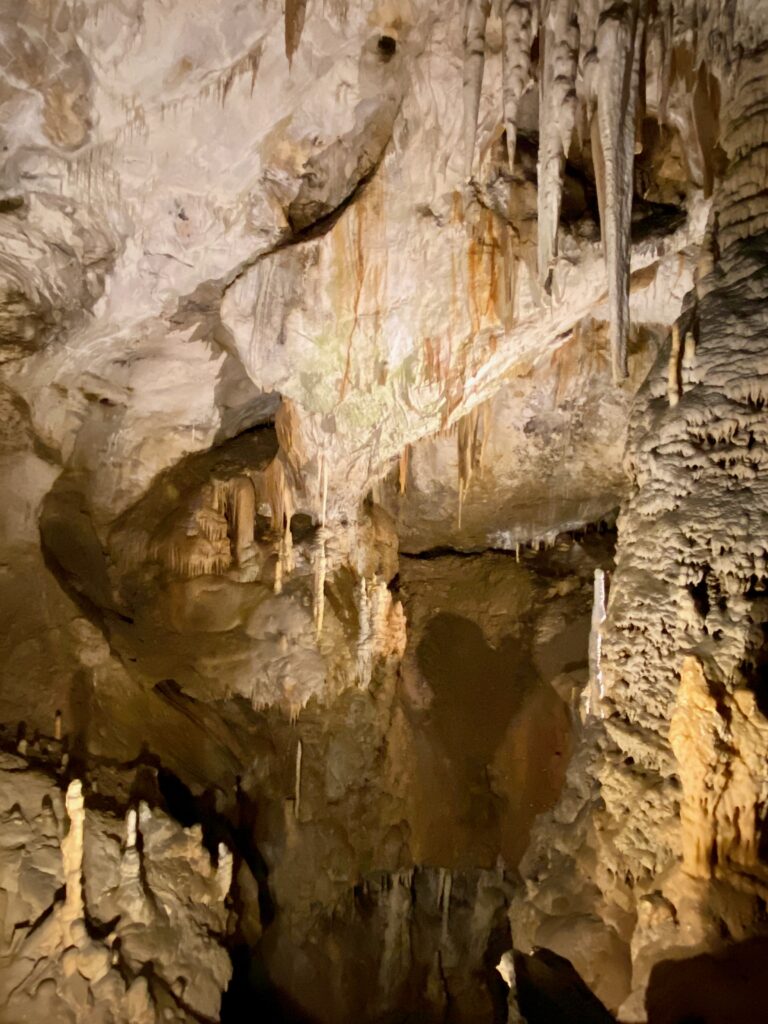
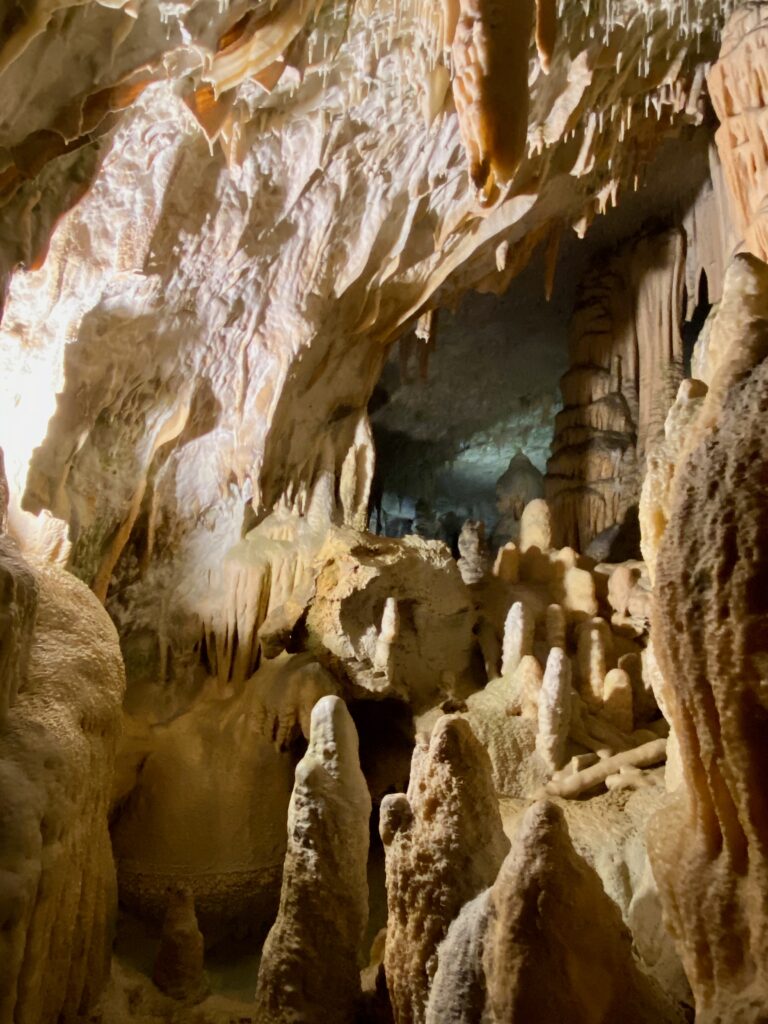
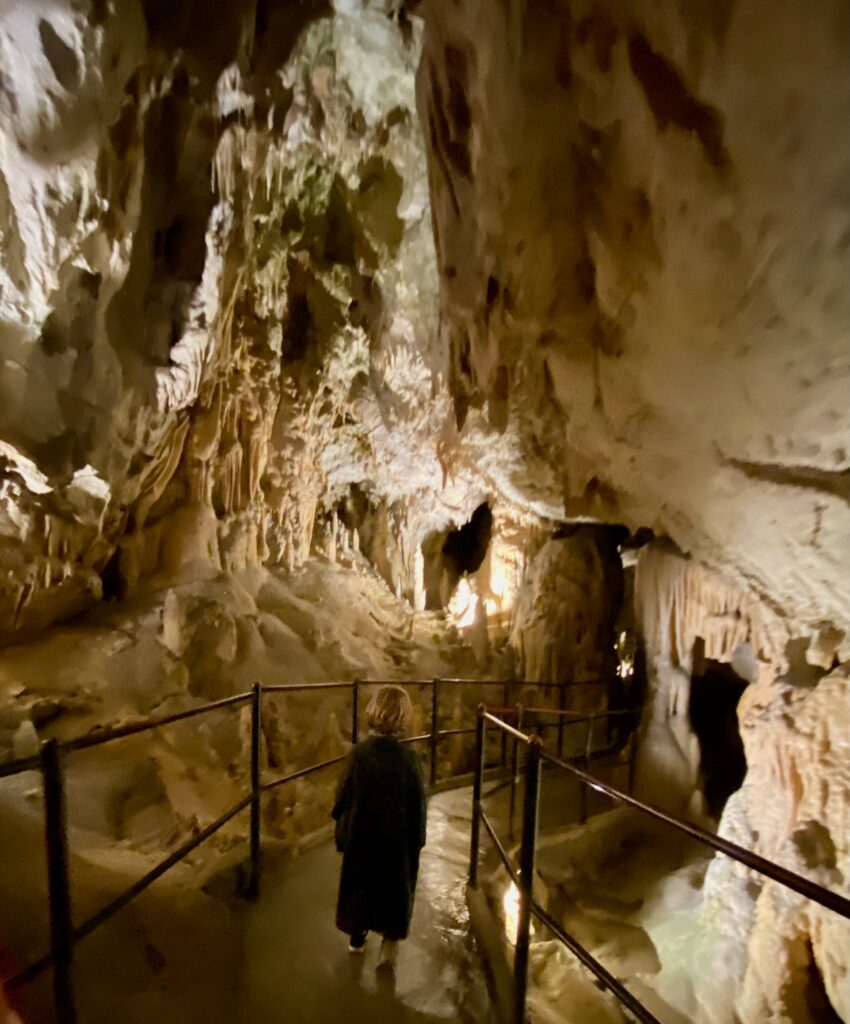
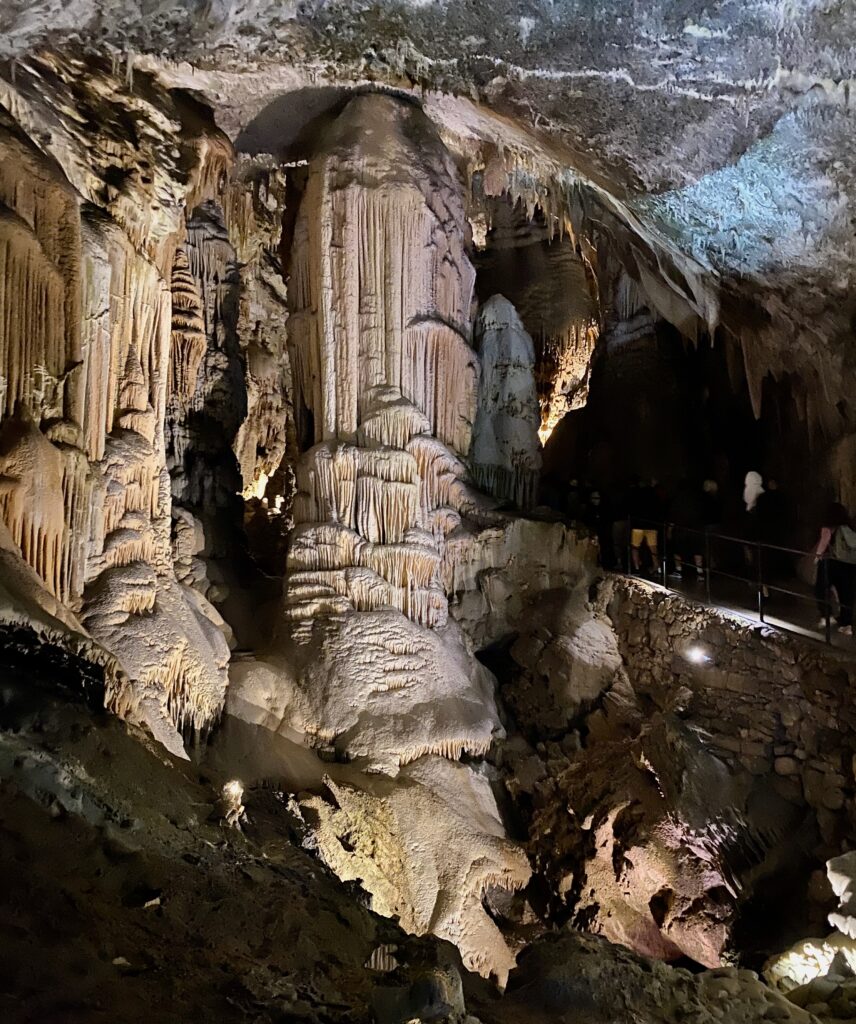
You can easily spend 4-5 days in Ljubljana and its vicinity but even if you only have 1-2 days, it is a must-see city for your next European vacation.
